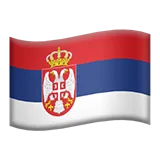Everything you need to know about chatbots for restaurant
We are often asked about chatbots and their use for business. In order to answer some of the questions, our team prepared an article about chatbots in the restaurant business, where we talk about:
- why a restaurant needs a chatbot,
- what tasks it solves,
- in what concepts it is used,
- how the chatbot works (from the point of view of the guest and the owner)
- the prospects for the development of such technologies.
Have a read and if you have any further questions about chatbots, just let us know!
A chatbot is a robot collocutor. You can chat with it or you can talk to it, for example, using Yandex.Alice. The bot can also sell and teach. It doesn't eat, doesn't sleep, doesn't lie and doesn’t ask for a salary.

The bot communicates with commands. It gives the answer or answer options to a specific command. It can work strictly according to the algorithm: for example, it will answer with a “www.cafe-future.ru” to the request for “site”. The bot can also use neural networks or other methods of machine learning, guessing what the person had in mind, and respond to it with a complete sentence. For example, to the question with a typo “How to fnd you?” it will answer: “On the Internet at www.cafe-future.ru or at our address in Moscow at 2nd Zvenigorodskaya Street, 12, ap. 23 “.
Today, the bots are implemented anywhere: in messengers, websites, applications, phone (voice), email, etc. And from the business side, into an accounting software: 1C, CRM, R-Keeper, etc. If you implement the bot in all business processes, you will have full cross-cutting analytics at hand.

The bots have proven to be effective in automating routine processes. One simple bot can reduce the load on the call center several times, responding to the same questions. It can perform voice commands (Yandex.Alice, Siri, Alexa, etc., in fact, they are all bots). It can be a learning assistant. The bots have become an alternative way to interact with the brand via instant messengers or voice assistants – through those interfaces that are always on hand, rather than through the website, telephone or offline branch.
Any business can use all of these options. Let's take a look at the examples.
Why does a restaurant need a chatbot, what tasks does it solve, in which concepts is it most often used?
The first benefit of the bot is that it can take orders. With the emergence of chatbots, we no longer need to go to the site or call the call center to order food – we can just open Telegram, Facebook, Viber, VKontakte, etc.
For instance, we developed a chatbot on Telegram and Facebook for Papa John’s pizza chain as part of a set of activities to create a new website and app.
The bot helps choose pizza, snacks, desserts, and drinks, arranges delivery for the particular date and time and immediately sends the order to the Papa John’s kitchen. It is easy for the user to log in and specify the delivery address – you just need to share a contact or location.
All the orders sent to the chatbot are stored in the user's personal account so that you can quickly repeat any of them in the mobile application and on the site.

For the first three months, more than 10,000 users installed the bot, over 5,000 orders were made, the conversion reached 30%! And all this without any advertising.
The bot was then turned off. And recently, Yandex itself has launched a Papa John’s bot for Yandex.Alice!
The second benefit of the bot is reducing the load on the call center. The bot responds to frequent questions in the application or by phone: where is the order, what are your opening hours, etc. And if your restaurant is a large delivery chain and you receive 300-500 similar calls per day, then the bot can easily replace one operator and reduce your costs.
Development of a bot for a call center starts from 100 thousand rubles and rarely exceeds 800 thousand rubles. Therefore, if we are talking about a serious load on the operators, the chatbot can pay off in the first minutes after its launch.
The third benefit of the chatbot is that it can be used for promo – for example, to manage the funnel of engagement with its help. Here is a good example: Brazilian Pizza Hut made a bot on Facebook Messenger to flirt with your favourite pizza on Valentine's Day. Users were writing seductive messages to the bot, the stuff like "Mmm, you are so hot ". The promotional campaign was based on a wordplay slogan: Win pizza's Heart and a #hutdate hashtag.
The promo campaign received a huge coverage – around 30 million people, thanks to publications in the media about the unusual bot, and 1.5 million organic interactions (likes, shares, reposts). Within 4 days, more than 30 thousand people flirted with pizza, and 5 thousand winners – those who won pizza’s heart with their flirting – received gifts.
Technologies are actively developing: machine learning, recognition, and generation of voice and video content. The bots are already passing The Turing Test and with proper training on large data sets, they are indistinguishable in their behaviour from people.
We are faced with the bots in chats on websites, messengers and in phone conversations, not always aware of this fact. And voice assistants are changing our way of life, becoming direct competitors to other ways of interaction, starting from phones and ending with websites. The bots can already cope with the answers to frequently asked questions, and in the short term, with all the tasks of the operator in a restaurant: they will help you place an order, book a table and work out customer feedback.
Chatbots are about interaction experience. When a restaurant launches its chatbot, guests have a new way to communicate with the brand in their familiar environment. They can order food or book a table, making a minimum of effort. There is a boom in the introduction of chatbots, and there is an audience that chooses only this way of interaction.








